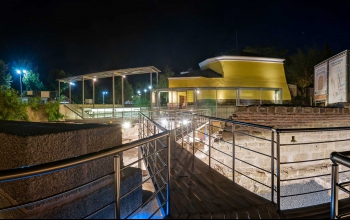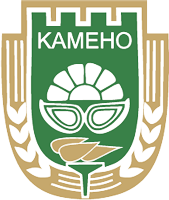Aquae Calidae - Therma / Thermopolis
Aquae Calidae is 15 km northwest of Vetren, Burgas. The archeological site is a late ancient city, in the centre of which functioned one of the most famous baths with mineral water in the Roman Empire.The earliest archaeological finds are from the 5th millennium BC, from the time of the Chalcolithic. Later, attracted by the healing mineral water, Thracians also settled here. In the 5th century BC there was already a sanctuary at the central mineral spring. In the spring itself, during its cleaning, over 6 thousand coins, rings, combs, and others were found, objects made from bronze, silver, gold, bone and wood, thrown into the spring by people healed by mineral water. In the 1st century there was a temple for the goddess Demeter, and in the 2nd century - a sanctuary of the Three Nymphs - health deities, known from Greek and Roman mythology. At the beginning of the 2nd century a monumental Roman bath with a hypocaust was built here.
According to the Roman historian Amian Marcellinus, the mineral water of Akve Khalide was the most famous in the entire Roman Empire. The bath was rebuilt several times, and in the VI century it was fortified with a fortress wall and four towers. At that time its area was 5 acres. The town of Akve Khalide itself was fortified with a strong fortress wall also in the VI century. In the following centuries the bath continued to function. In the X-XII centuries it was widely used for treatment by all circles of society, including the highest representatives of the Byzantine aristocracy. This is evidenced by the nearly 40 lead seals of aristocrats found near the baths, one of which is imperial.
In 1206, the baths were looted and burned by Emperor Henry, the second emperor of the Latin Empire. At that time the city bore its medieval name Therma. Later, albeit slowly, the baths were restored under the rule of the Bulgarian kings. This is evidenced by the finds, including a gold ring-seal of Peter - a cupbearer and cousin of an unknown Bulgarian ruler from the XIV century.
At the end of the 15th century a new bath was built, already by the Ottomans. In the next century, Sultan Suleiman the Magnificent was treated here. As a token of gratitude, he arranged the baths, and established an annual fair with them with a special firman.
Today, thanks to the excavations, part of the monumental walls of the fortress and the Roman baths have been discovered. There are 3 swimming pools and one of the fortress towers in the bathroom. The bathroom from the Ottoman period has also been restored and is open to visitors.
Numerous finds of gold, silver and bronze were discovered during the excavations. Among them are several gold rings, gold, silver and bronze coins (from the 5th century BC to the XVII-XVIII centuries), lead seals, vessels for aromatic oils and perfumes used in bathing, and many others.
Information
Website http://www.aquae-calidae.com/en
Address Mineralni Bani, Burgas, Bulgaria
GPS coordinates 42.602631, 27.394352
Work times 08:00 - 20:00



